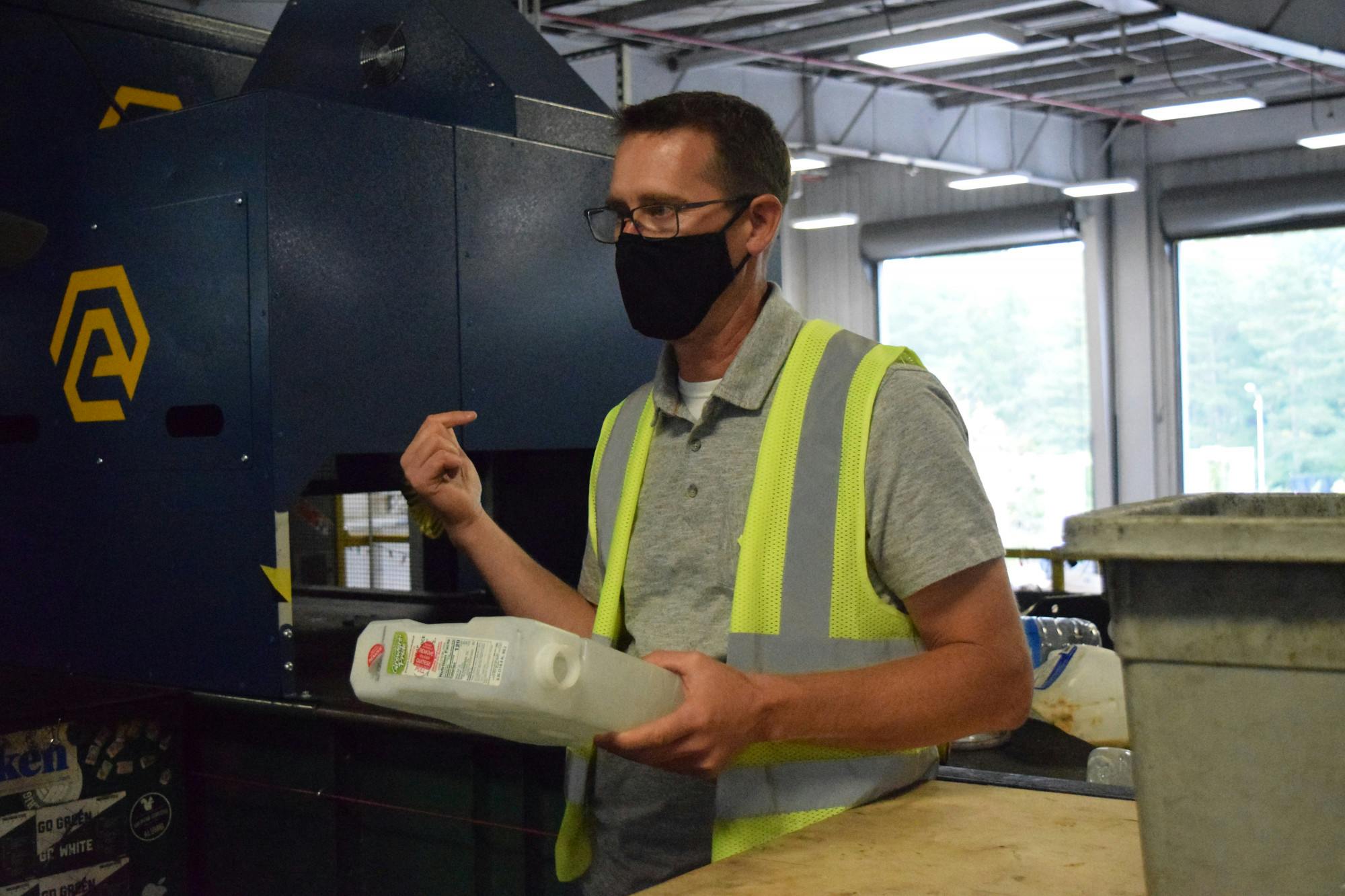The Michigan State University Surplus Store and Recycling Center installed a new robotic sorter last week, which allows the facility to categorize recyclables more efficiently and combat staffing shortages.
The sorter, which takes the form of a robotic arm hovering over the center’s conveyor belt, can sort up to 80 items per second — an upgrade from the 40 items a human sorter can perform.
The addition was made possible by a slew of state grants, which covered about $180,000 of the $250,000 associated with purchasing and installing the sorter.
Recycling Director David Smith said that he came across the technology at an operator’s conference four years ago. He was impressed at the time, but didn’t jump to install it.
That mindset changed two years later when the plant had a safety issue involving an employee sorter. Smith and his team decided to pursue installing the robotic sorter, believing it would help curb such an issue from occurring again.
“We thought, had we had this robot here, that’s less people sorting material,” Smith said. “We don’t have many injuries ... but we want to keep it that way.”
The upgrade came with additional benefits outside of safety.
The sorter saves the center money, as it can sort more items than a human sorter without having to be paid a wage. Robots are also more reliable, Smith said.
“Robots are highly reliable,” Smith said. “They don’t call in sick and those kinds of things.”
The sorter is not one, single machine; it's a system of machines working together.
A “vision system” is positioned in front of the sorter arm itself. This is, essentially, a camera that is pre-installed with over two million images — which it utilizes to identify what each recyclable that comes within its lens is.
Smith said that it can also be “trained” to identify containers it hasn’t seen before. He is currently trying to the machine to recognize empty juice containers from dining halls.
“The difference between this technology and a lot of other technologies is this system learns like the human brain does,” Smith said.
After being scanned by the “vision system,” recyclables are then sent into a large cage containing the robotic arm. On the end of the arm is a suction system, which it utilizes to grab items and dump them into their respective bin.
The sorter comes at the perfect time for the recycling center. Higher labor costs and a staffing shortage in the wake of COVID-19 have left holes in their usual method of human sorting. The robotic sorter acts in the place of two employees, Smith said.
“I’ve been able to hire fewer students,” Smith said. “We’re gonna keep it that way with the robot. Hopefully, we’re taking the place of a couple of people.”
Smith said that installing the new sorter was a bit of a gamble, but it has paid off with the flexibility and overall benefits it provides.
“Any time you introduce new technology, you’re not 100% sure,” Smith said. “We’re still going to learn it. This thing can sort any material. We can program it to sort whatever we want ... a lot of flexibility.”
Support student media!
Please consider donating to The State News and help fund the future of journalism.
Discussion
Share and discuss “MSU Recycling Center installs new robotic sorter, adds more flexibility” on social media.






